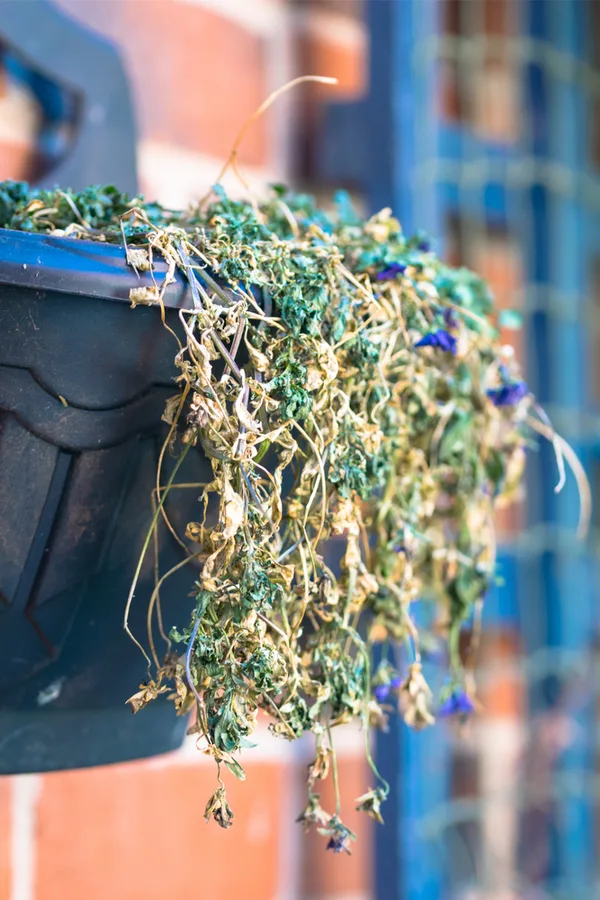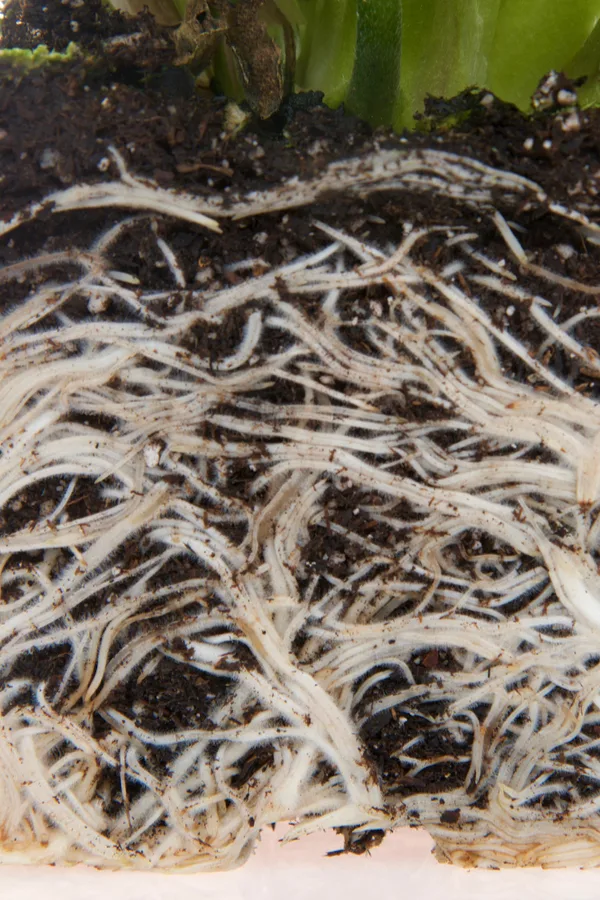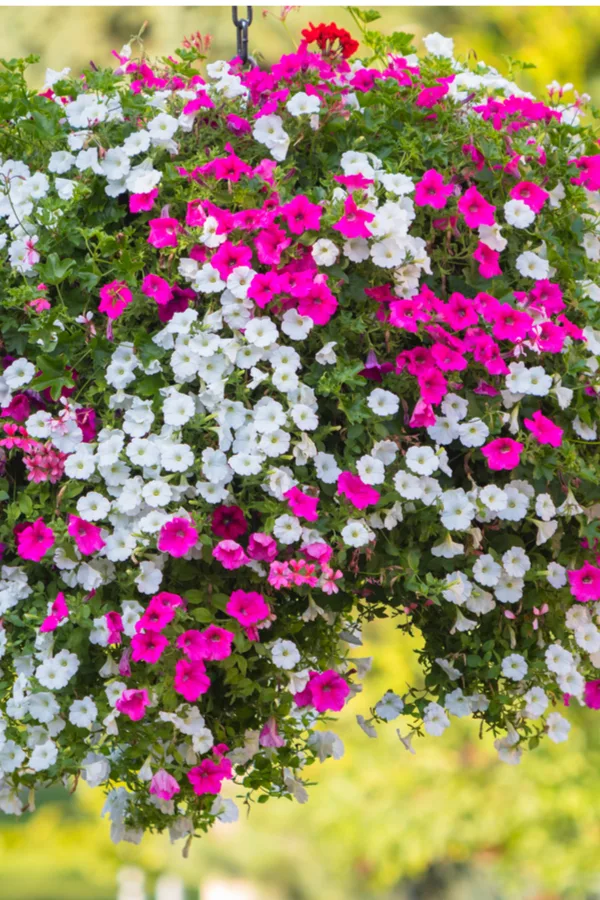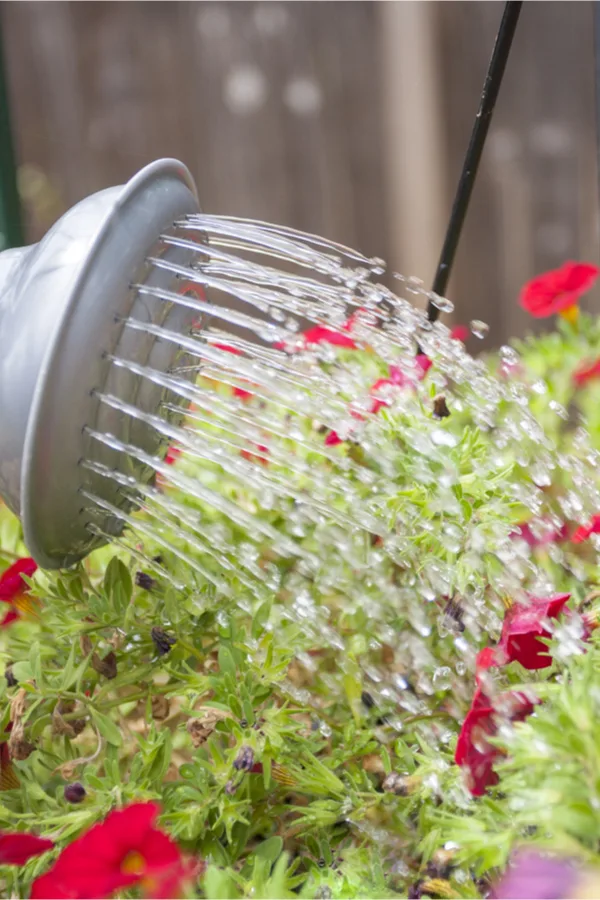Without a doubt, one of the most frustrating things for a gardener is to watch their once beautiful hanging baskets begin to struggle by the time early summer rolls around. Especially when they keep getting worse day by day, no matter how much TLC you give them!
It can certainly be depressing to watch the life slowly drain from a hanging baskets. First the flowers begin to dwindle in numbers. Next, the foliage lightens in color. And then, the leaves start to brown off at the tips.
Before you know it, your are left with a scrawny, wiry plant that looks more like a Charlie Brown Christmas tree than a planter! So how do you stop the madness?
When it comes right down to it, there are usually 3 major reasons hanging baskets begin to fail. The bad news is that if you do nothing at the first sign of trouble, your plants will indeed slowly fade away.

The good news is that you can correct all three quite easily. And even better, keep your hanging baskets flowering, blooming and booming all summer long.
Here is a look at the 3 biggest reasons hanging baskets struggle, and how to correct each issue for gorgeous, long-lasting baskets from spring til fall!
The 3 Most Common Reasons Hanging Baskets Struggle – And How To Fix Them!
#1 Not Enough Room
One of the most common reasons many hanging baskets eventually fail is that they simply run out of room for their roots.
Nearly every hanging basket owner has had the pleasure at some point of watching water run right through their plant and out the bottom as they water.
When this happens, it’s almost always because the plant’s roots have filed the entire basket – a condition better known as a plant being root bound.

Unfortunately, once a hanging basket plant becomes root bound, it’s nearly impossible to keep it alive and well in it’s existing container. No matter how much you water or fertilize.
At that point, the roots are simply too tangled too absorb any water or nutrients. And without intervention, the plant slowly starves to death as the growing season wears on.
Fixing A Root Bound Plant
Unfortunately, most commercial hanging basket planters are simply not large enough to last an entire growing season. Many nurseries and greenhouses use smaller 10 and 12″ baskets for their plants.
These smaller baskets look great in May and June, but run out of steam by early summer. The easiest way to fix the issue is to replant into a larger hanging basket. With new soil and more room to expand, most hanging baskets will quickly respond and come back to life.

When replanting or even growing your own hanging baskets, use baskets that are at least 16 to 18″ in diameter. These larger sizes hold enough soil to keep your plants blooming all summer, and not just for the first few months.
And if your plant simply gets too big for any basket – don’t give up. Plant it into the landscape to create a huge flowering focal point!
#2 Failure To Fertilize – Why Hanging Baskets Struggle
If you want to have gorgeous hanging baskets that last all season, fertilizing is a must. That is because, no matter how incredible the potting soil might be in your container, it will eventually run out of power.
The simple fact is flowering annuals require a lot of energy to continue to thrive and bloom. And they pull that energy straight from the soil as they grow.
But by using a steady, slow and consistent fertilizing approach, you can keep the energy and nutrients coming. To perform at their best, hanging baskets should be powered up with a light dose of liquid fertilizer every few weeks.
Check Out Our Podcast On Hanging Basket Care!
Why a light dose? Because it keeps plants growing slow and steady. Too much fertilizer all at once can send the plant into overdrive. The result is a big spurt that grows too much foliage and roots too quickly. And, in the end, shortens the plant’s life span.
Instead, use any recommended dose at about half strength. This keeps a slow but steady stream to keep the plant blooming perfectly. As for what to use, compost tea is one of the best hanging basket fertilizers around. As is worm casting tea. (See: How To Make & Use Compost Tea)
You can also use a good commercial all purpose liquid fertilizer as well, but again, be sure to mix it at half strength to keep the feeding slow and steady.
#3 Over, Under & Inconsistent Watering – Why Hanging Baskets Struggle
And last but not least, how and when you water your hanging baskets can make all the difference if a plant will thrive, or slowly die.
When it comes to watering hanging basket plants for success, it all comes down to consistency. As in supplying your plants with the water they need, when they need it.
Allowing plants to dry out too much in between waterings is a recipe for disaster. When a plant wilts and slumps, damage begins to occurs to the cells within the stems and foliage. Damage that can keep the plant from absorbing nutrients later on.

But as much as under-watering can be an issue, it is usually over-watering than will harm plants more often. When roots sit in water too long, they swell. Not only can this cause rot and mildew on plants, it also keeps the roots from absorbing nutrients.
That lack of nutrients from over-watering is why an over-watered plant often turns yellow or pale green. It simply can’t get enough nutrients to grow and thrive.
Always Check Your Plants For Moisture
Before watering, be sure to check down in the soil an inch or so with your finger to make sure plants are drying out before watering. If your finger has wet soil sticking to it, it does not need to be watered.
Another big key is to water and check watering at the same time every day. This consistency helps your plants adjust to a steady stream of water.
As for when to water, morning is always best. Allowing plants to have an early drink prepares them for the heat of the day. It also keeps the plants from sun scald – a condition that can occur on plants as the water burns into the leaves from hot, mid-day rays from the sun.
Here is to avoiding the 3 biggest issues with growing hanging baskets, and to having the best looking baskets around! Happy Gardening – Jim and Mary.
Jim and Mary Competti have been writing gardening, DIY and recipe articles and books for over 15 years from their 46 acre Ohio farm. The two are frequent speakers on all things gardening and love to travel in their spare time.
As always, feel free to email us at thefarm@owgarden.com with comments, questions, or to simply say hello! You can sign up for our free email list in the subscribe now box in the middle of this article. Follow us on Facebook here : OWG Facebook. This article may contain affiliate links.
